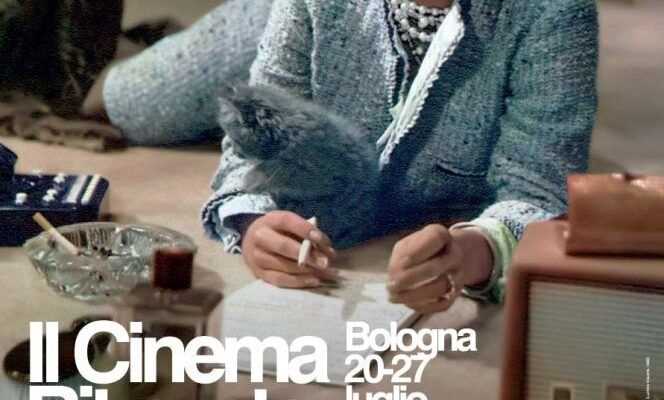By skillfully shifting its niche to the height of summer, Il Cinema ritrovato (“the cinema found again”) in Bologna, Italy, was one of the few festivals to pass through the drops of the health crisis. His 35e edition was held from July 20 to 27, certainly with appreciably less public than usual, but a program still as sumptuous. Organized by the Bologna Cinémathèque, the event plays a leading role in the memory of cinema, offering a veritable cascade of classics, incunabula, state-of-the-art restorations, archivist finds or retrospectives from behind the bundles. This year, tributes were paid to the German naturalized French actress Romy Schneider, whose portrait adorned the poster of the edition, and to the American director George Stevens, prolix craftsman of Hollywood classicism.
While walking among the sections, the festival-goer was this year invited to confront the question of new writings or how, at regular intervals, filmmakers venture to completely renovate the current lexicon of cinema. In the section “The Century of Cinema” devoted to the year 1901, was presented a selection of works by Ferdinand Zecca (1864-1947), an entertainer recruited as director by the Pathé firm to spin reels on the chain, and especially Story of a crime. This five-minute tape, which traces the trajectory of a murderer from the package to the guillotine, has remained famous for having, supposedly, invented the flashback. Thanks to an ingenious recess in the decor, Zecca’s contribution is above all to suggest the space of the dream: that of his hero imprisoned on the eve of his death, seeing his whole life parading in spirit. Magnificent idea of spatial editing combining in the same shot the past and the present, the real scene and the imaginary scene. By this gesture, Zecca, formidable inventor, tore the cinema from its theatrical kinship.
The hidden power of cinema
Among the screenings under the stars in Piazza Maggiore, a much-awaited ritual of the festival, that of Vampyr (1932), by Danish filmmaker Carl Theodor Dreyer (1889-1968), was an event. This fantastic film, one of the most terrifying of all, comes from the period of transition between the silent and the talking. It follows the arrival of a young man fond of esotericism in a sinister little village haunted by a vampire. All along, it seems to evolve in the very substance of the nightmare where the benchmarks of ordinary reality capsize. For Dreyer, this substance is none other than the occult power of cinema: bodyless shadows dancing infernal sarabandes, possessed faces that fill the images with dread, incoherent spaces, time reversed or slowed down.
You have 46.23% of this article to read. The rest is for subscribers only.
